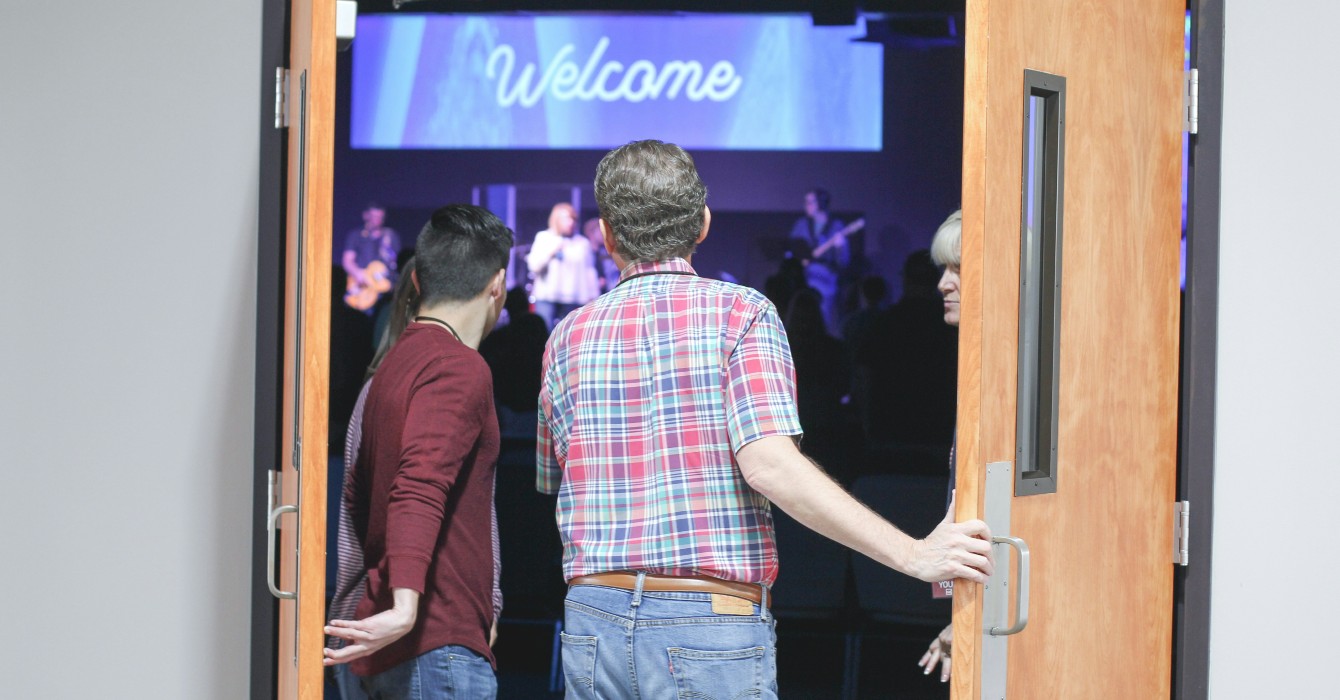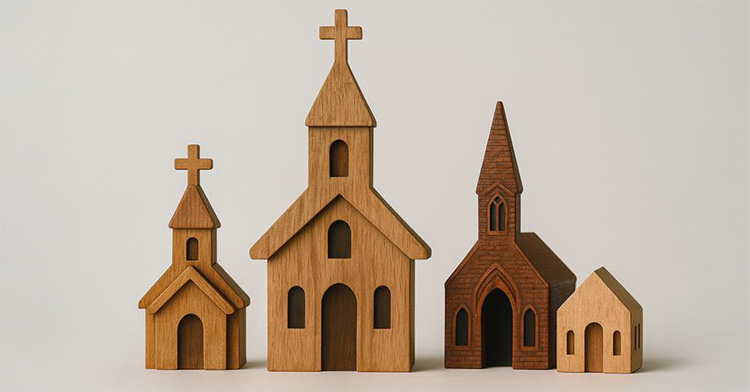On a bright February Sunday morning, cars circled a packed parking lot at Covenant Presbyterian Church in central Austin, Texas. The second of four services -- three traditional, one contemporary -- was about to get underway.
Well-heeled worshippers streamed into the stone sanctuary. Parents hurried to drop off their children for Sunday school in the four-story education building. Visitor and new member coordinator Amy Skaggs offered coffee, doughnuts and kolaches to newcomers. Within the hour, more than 40 people would take membership vows in a basement classroom. In the last five years, Covenant has grown by 500 members.
Across town on the following Sunday, a more casually dressed and ethnically diverse crowd gathered in the Campbell Elementary School cafeteria. They settled into plastic chairs as the praise and worship band’s guitars and drums reverberated through the dimly lit room. By the second song, hardly any open seats remained.
After the service, the Rev. Toriano Mayo noticed the bottleneck of worshippers at the exit. Some 500 to 600 people attend The Well’s two services each Sunday, and more people continue to show up each week. The church, he said, is running out of room.
At a time when many churches in the United States are struggling, some even dying, a counternarrative is playing out in booming Austin, one of the fastest-growing cities in the nation. Though not all of Austin’s congregations are thriving, some area churches are clearly being squeezed by the region’s population explosion over the last decade. And while packed pews are a cause for celebration, the rapid growth presents challenges, and perhaps even a few lessons -- lessons about hospitality, welcome and community in an era of increasing isolation.
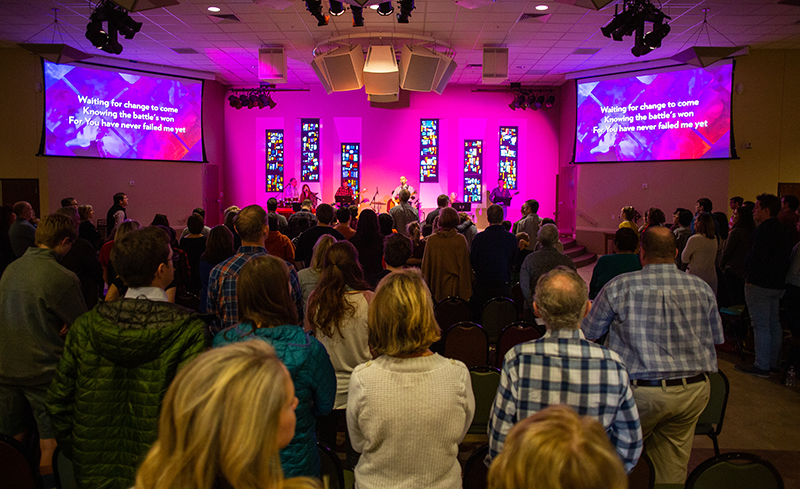
The Austin metro area, a five-county region, has grown from 846,000 in 1990 to more than 2 million today. Since 2010, the area has absorbed more than 150 new people a day, counting births, according to a recent report. The city demographer predicts that Austin proper will likely hit the million mark by 2020. Newcomers gravitate to the area for tech jobs, the much-touted Austin lifestyle, and, for those coming from California and East Coast cities, more-affordable housing.
The boom has created big-city hassles: traffic jams and parking problems, a rising median home price, and seemingly endless construction. It’s also led to feelings of isolation and disconnection among residents, who seek community in the midst of massive change.
What are the causes of disconnection and isolation in your community? How can your church address them?
To accommodate the growth, church leaders have added more worship services and programs. They’ve expanded or built new sanctuaries. Some have gone multisite -- often digitally streaming sermons from a main location to satellite campuses in the suburbs. They have planted churches like The Well that meet in school cafeterias. And they have created more small groups so members don’t feel overwhelmed.
Matter of arithmetic?
Church growth in Austin may be a simple matter of arithmetic, said Mark Chaves, a Duke University sociologist who studies religion. Population growth has always been an important driver of church growth; more people moving to an area means more people attending its churches. Indeed, some churches in other rapidly growing areas, such as Dallas and Nashville, have also experienced explosive growth.
Although church attendance is declining nationally, it’s impossible to say for sure whether anything exceptional is happening in Austin, barring a study of per capita attendance in the area, Chaves said.
“Whether there’s a higher percentage of Austin population attending church now than before -- I suspect not,” he said.
Still, Austin’s rapid urbanization and transience seem to have stirred a longing for a spiritual family, church leaders say. As the city becomes more crowded, new transplants and longtime residents alike can feel lonely and unmoored. And that’s driving up attendance in some congregations.
At Covenant, a Presbyterian (U.S.A) congregation founded in the early 1960s, the four Sunday services draw more than 1,000 people every week, up from about 700 in 2013. The church recently paid off its 60,000-square-foot fellowship and education building. Annual giving is at an all-time high.
“We’re jumping right now,” said the Rev. Thomas Daniel, who has served as senior pastor since 2014. “I love it. This is what you want to be a part of.”
He said it’s especially encouraging that most new members were previously unaffiliated with a church. With Covenant’s large staff and its multitude of programs and ministries, Daniel said, newcomers find a variety of “on-ramps … to be in community where they’re known and valued.”

Challenges of growth
But the rapid pace that comes with growth can be challenging for the staff. Skaggs is constantly meeting with prospective members for coffee and lunch. Other staff members are managing an assortment of programs and classes. Daniel said he doesn’t want Covenant to be a “cloistered, gated community.” Church facilities are in use seven days a week for activities such as Alcoholics Anonymous meetings, ESL classes and refugee ministries. But sometimes, he said, “we’re really stretched for space.”
Staying on task with mission is crucial, Daniel said, adding that he doesn’t want a “bunch of mediocre ministries.”
Which programs at your church serve a core purpose? Which are “busyness”? How do you know?
Covenant leaders often have to ask, “Does this add to our core purpose, or does this addition just make us busier but take away from what we’re called to do?” he said.
At The Well, too, space presents an increasingly urgent concern.
The Well formed in 2012 as an 11-member church plant from Hill Country Bible Church, a multicampus church that has planted dozens of congregations in Central Texas. Most members are young singles, married couples or young families who are relatively new to Austin, Mayo said.
“Being a younger congregation, we can’t raise the funds needed to have our own space that would hopefully bless and serve the community around us,” Mayo said. “So we’re stuck at an awkward in-between.”
As the church has ballooned in size, leaders have poured their efforts into creating more intimate connections. The Well has more than a dozen weekly Bible study groups throughout the city, in addition to other small groups that meet regularly.
This was key for Nick Oberski, 30, who moved to Austin last May with his wife and toddler son. They made close friends quickly, he said, because of The Well’s neighborhood groups.
Do people in your church “do life together” or just spend a few minutes together on Sunday? How so?
“We’re doing life with them instead of seeing them for a few minutes on Sunday,” he said. “It’s really the community we love the most.”
Get smaller as you get bigger
The Rev. Karen Thompson, the senior pastor of Metropolitan Community Church of Austin, which saw a 10 percent growth in the last year, also emphasizes small groups.
“In the church world, they say, ‘As you get bigger, you have to get smaller,’” she said.
Other religious communities in the Austin area are also growing and facing similar tests. Muslim and Hindu communities have launched construction and expansion projects as their congregations have swelled. The area’s Jewish population has also grown significantly.
Temple Beth Shalom, a Reform Jewish congregation in Northwest Austin, has seen an influx of both young families and retirees who move to Austin to be closer to their grandchildren.
Since its founding 19 years ago, the congregation has grown from 10 families to 685 “member units,” a term used to count both families and individuals, according to Jennifer Braham, the congregation’s director of member engagement. The temple recently ran out of room for some of its education programs and now has to rent additional classroom space.
“We’re definitely a thriving congregation,” Braham said.
To make sure people don’t feel disconnected amid rapid growth, Braham has created a relationship program that pairs new members with older members. The temple has also started satellite Hebrew schools in neighborhoods so families can find connections outside the weekend services and can avoid fighting rush-hour traffic.
Why do people show up at your church on Sunday? What do they want?
The question of why some congregations get bigger -- and others don’t -- can be complicated. While Christian clergy hope that the message of the gospel is the main draw, pastors say that the reasons people show up on Sundays vary wildly.
Thompson, whose Metropolitan Community Church of 300 is part of a denomination founded for LGBT Christians, attributed her congregation’s uptick in membership to a new building, outreach ministries and increased apprehension following the 2016 presidential election and the 2017 Texas State Legislature session. LGBT families, both long-term Austin residents and newcomers, were worried about their rights and felt the call to be in community with like-minded people.
“People come to our services for hope -- and certainly to worship and because of their faith -- but to find hope and to see people who are concerned about the things that they are,” Thompson said.
Reasons for joining
For Amy Felker, a practical concern figured into her decision to join Covenant last month. The 34-year-old had recently adopted her 5-year-old foster daughter. She wanted a church that offered child care and traditional programming. A nondenominational church she had attended previously grew so quickly that it didn’t have the resources to keep up, she said.
Dan Hart, an architect who moved to Austin from Midland, Texas, last year, said the preaching, church mission and Sunday school class where people “aren’t afraid to ask the hard questions” made Covenant the right choice for him.
Pastors recognize that some people join for reasons that have little to do with theology and mission.
“Some [churches] grow because, honestly, they have a great band,” said Jonathan Dodson, the pastor of City Life Church in downtown Austin. “We are in a consumer society, and we’re in a music town.”
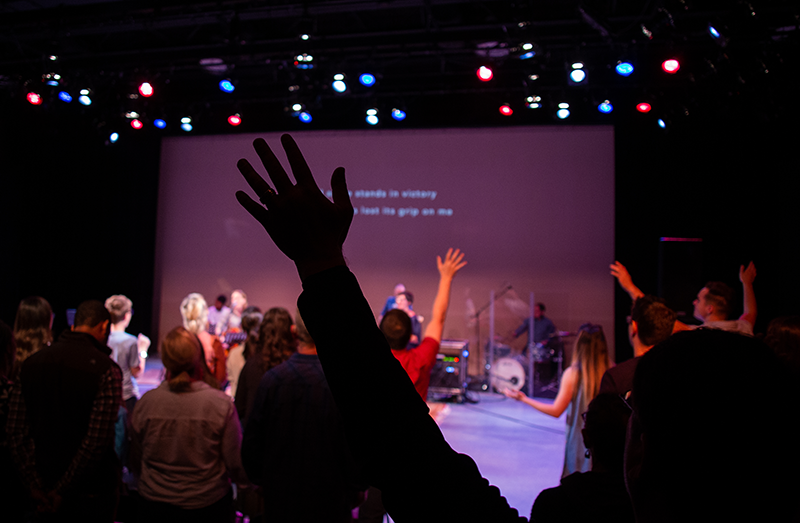
Chaves, who wrote the book “American Religion: Contemporary Trends,” said his research shows that Christians gravitate toward bigger churches -- not just the stereotypical megachurches but larger churches in mainline Protestant denominations as well. For some, the reason for joining has more to do with not feeling pressured to participate.
“We can see that clearly part of the attraction of big churches for some people is exactly that people don’t have to get involved beyond going to the show on Sunday,” Chaves said. “It’s easier to free-ride in a bigger church than a smaller church.”
At The Well, pastors hammer home the idea of the church as family and encourage everyone to be involved at some level. Mayo said 50 percent of The Well’s new members moved to Austin very recently and long for spiritual connection.
“This is very biblical, as spiritual growth is not done in isolation,” he said. “We grow best when we do it in community with others.”
Austin’s transient population
This can be particularly challenging in a city with a transient population. More than 50,000 college students attend the University of Texas. And while millennials see Austin as one of the most desirable cities to live in, they often don’t stay long, pulled away by other job opportunities. Dodson said he “woke up late” to the transience factor after planting a downtown church.
When he started City Life Church in 2007, he envisioned a congregation that made the urban core its mission field. The city center was on the verge of transformation as the construction of condominium towers promised new residential life downtown.
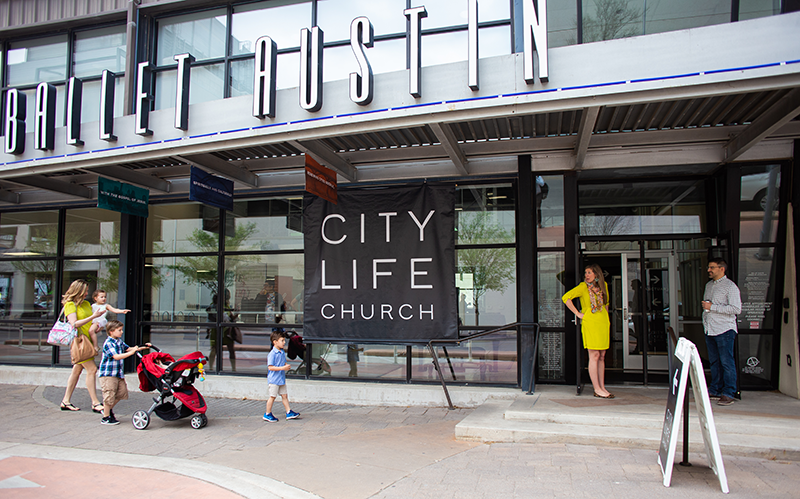
Dodson’s congregation grew quickly and worshipped in quirky spaces, including a coffee shop and a bar.
But as many people as were moving in, almost as many were moving out, Dodson said.
“It’s a revolving door,” he said. “It’s growth, but it’s revolving growth.”
A 2016 report by the apartment listing website Abodo found that while Austin ranks among the fastest-growing cities, it’s also losing residents at nearly the same rate.
Dodson said City Life leaders eventually began to see the congregational turnover as an opportunity.
“We’ve tried to start thinking of it as ‘We’re not losing people; we’re sending people,’” he said. “It’s less about us and it’s more about them.”
Hyperlocal focus
Sometimes, Austin’s rapid growth can affect churches indirectly. Crowded roads, for example, can change attendance patterns.
The Rev. Tom Goodman, the pastor of Hillcrest Church, a Southern Baptist congregation about 8 miles northwest of downtown, had to shift his congregation’s expectations about geographical reach and ministry focus.
Over the past 15 years, Goodman had watched young adult members get married, start families and then migrate to the suburbs where they could buy bigger, less expensive homes. Many, he said, would still make the drive to Hillcrest on Sundays. But as the metro area became more populated and the roads more clogged, fewer were willing to travel.
“I’ve had folks sit down with me and say, ‘Gosh, we love you, and if we could take you to the suburbs, we would. But we found a church around the corner,’” he said.
What would it mean for your church to take a “hyperlocal approach” to ministry?
With respect to net membership, Hillcrest is holding steady, Goodman said. But to grow, he believes that the church must take a hyperlocal approach. Hillcrest has begun focusing on the needs of people in the immediate area by hosting play dates for preschool children, offering church facilities to neighborhood recovery groups and finding out how to serve families with kids in nearby schools.
“I think churches are having to realize if we could consider ourselves a regional church before, that’s not the case anymore,” Goodman said.

‘For the flourishing of the city’
Local church planters say that even if every pew in every church were filled, there would still not be enough churches to accommodate Austin’s growth. For Mayo and others at The Well, that’s a challenge they feel compelled to tackle.
“I think there’s a need still for more churches to serve the growing population of Austin,” Mayo said. “Our vision is actually to plant 100 churches within the first 50 years of our existence.”
Daniel agrees that many more people can be reached in Austin. It’s a reminder for him not to get caught up in his church’s success but to focus on forming members to be sent out to share the gospel.
“God didn’t create Covenant just to have a healthy institution,” he said. “We exist for the flourishing of the city.”
Questions to consider
Questions to consider
- What are the causes of disconnection and isolation in your community? How can your church address them?
- Which programs at your church serve a core purpose? Which are “busyness”? How do you know?
- How does your church create and nurture connection among people?
- Do people in your church “do life together” or just spend a few minutes together on Sunday? How so?
- Why do people show up at your church on Sunday? What do they want?
- What would it mean for your church to take a “hyperlocal approach” to ministry?



